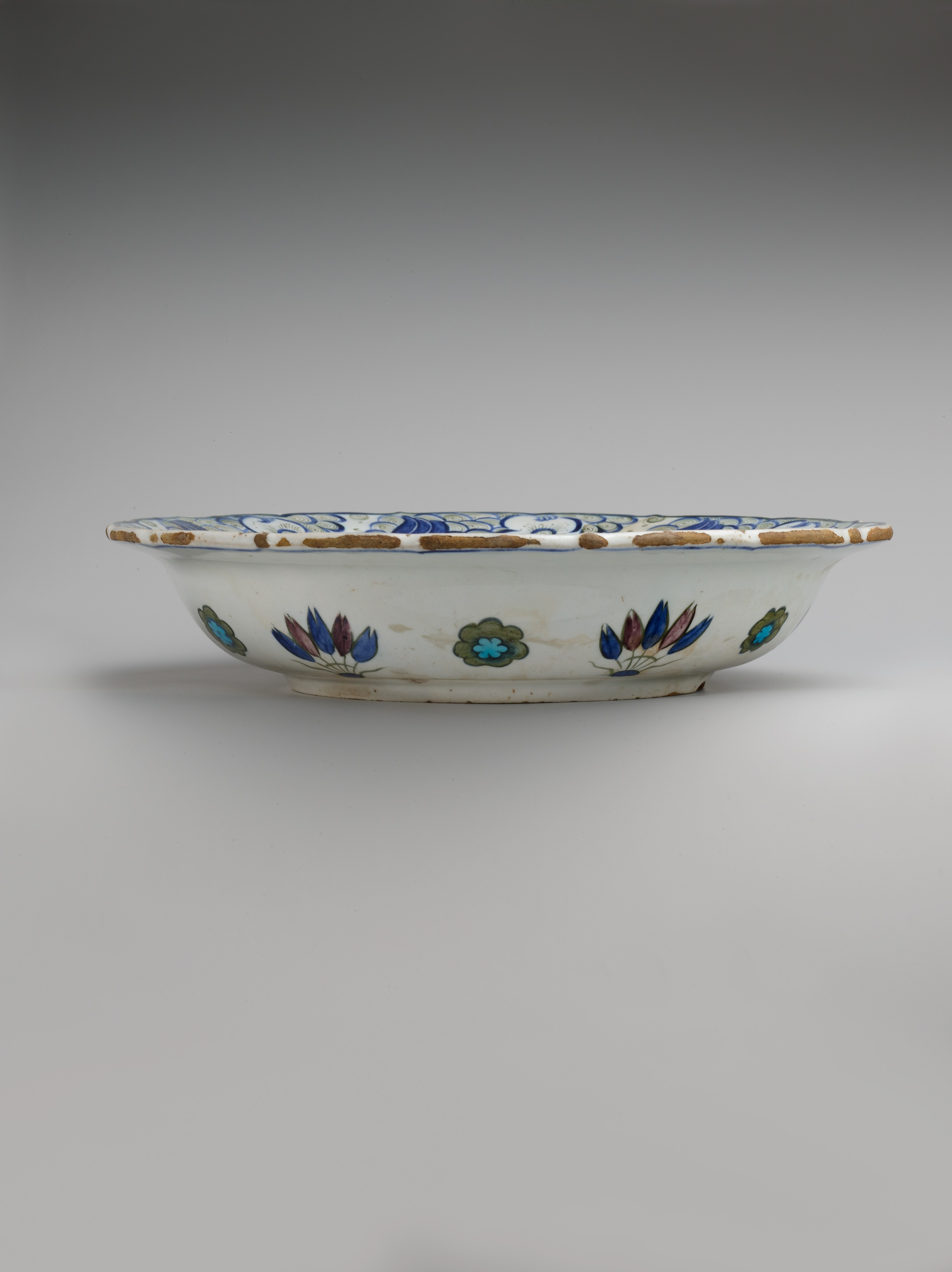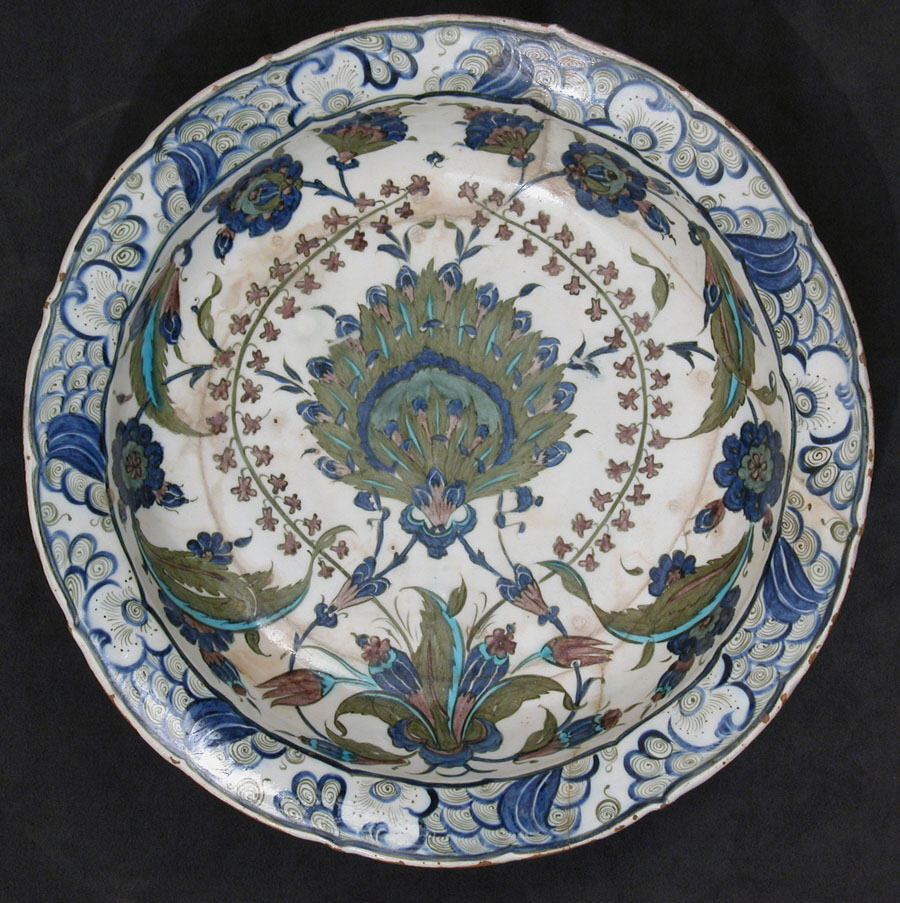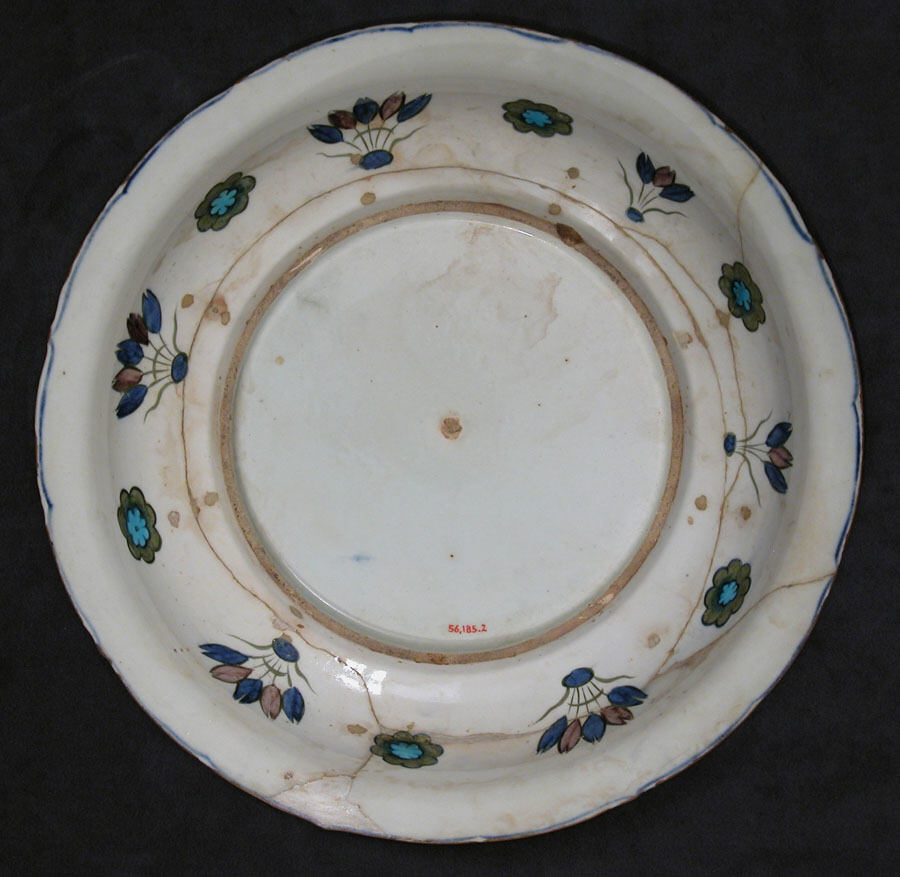Dish with Floral Design
This dish shows a cusped edge drawn from a Ming prototype. The wave, foam and rock design of the rim recall its Chinese model as well. Unusual coloration of sage-green and manganese purple are combined with more typical Iznik tones such as blue and turquoise. The bottom of the dish is dominated by a large and complex palmette. It is surrounded by saz or feathery leaves, that curl over themselves, which was a common motif for the period. However the two sprays of hyacinths that frame the central palmette, and the two tulips at the bottom of the composition, mark the debut of the new floral style that was to dominate Ottoman art in the second half of the 16th century and beyond.
This type of ceramic dish was produced in fairly small numbers and consequently both rare and highly sought-after by collectors and museums. It is of special interest because its production coincided with a period of far-reaching change in the history of Ottoman art.
Due to rights restrictions, this image cannot be enlarged, viewed at full screen, or downloaded.
This artwork is meant to be viewed from right to left. Scroll left to view more.






